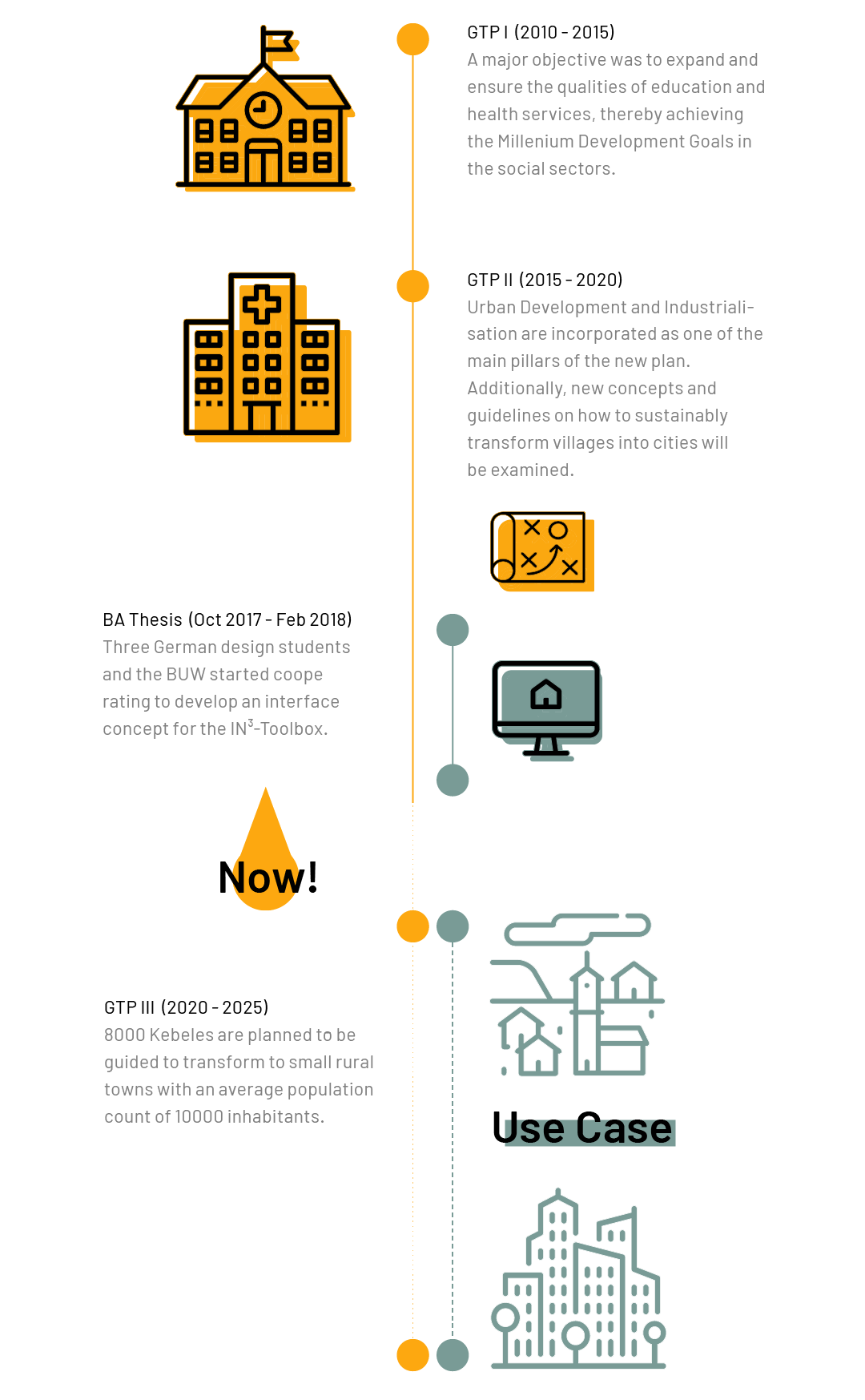Inhalt des Kurses
Bachelorarbeiten Interaktionsgestaltung
Interaktionsgestaltung
Semesterjahr7. Semester
PACIAN

PACIAN
The Parametric City Analysis Toolbox for Urban Development
The bachelor’s thesis “PACIAN - The Parametric City Analysis Toolbox for Urban Development” focuses on the development of a user interface tailored to the specific needs of future Ethiopian urban planners.
Fieldtrip to Ethiopia
Ethiopia faces an extreme growth in population. The country is sweating for labour and the people of Ethiopia seek for work and better living conditions. The resulting rapid wave of urbanization is an issue for local urban planning capacities. The government of Ethiopia tries to solve the problem by transforming over eight thousand small rural settlements into urban town centres.
Outlining the Bachelor-Thesis
With overwhelming tendencies, we discovered through our research, that there are two major aspects or potentials of improvement in nowadays city planning. First fast decisions making and second participation. We decided to tackle the second mentioned, which can be split into four subcategories: Inventory, Analysis, Simulation and Implementation. As Analysis and Simulation, are the most time-consuming steps with the least reliable tools at hand, we set our goal to improve these steps.

The help and insights we could generate through our contacts with the Institute for Experimental Building (ifex) in Weimar, the architecture buro in Ravensburg and the Emerging City Lab Addis Abeba (ECLAA) made this possible. The plan is to establish new industrial and residential areas in the rural sector to decentralize the heavy load on urban centres like the capital city of Addis Ababa. The goal of this bachelor’s thesis is to create a sophisticated application concept, named PACIAN, that helps Ethiopian urban planners attaining the government’s plan. The thesis is part of an international and interdisciplinary research cooperation program between the “Bauhaus University Weimar”, the “Ethiopian Institute of Architecture, Building Construction and City Development” and the “Emerging City Lab” in Addis Ababa.

The Growth and Transformaton Plans

Developing Urban Planing Software
PACIAN ensures easy, fast and flexible handling of geographic data and gives the possibility to analyze existing areas and their coherences. Furthermore, PACIAN enables the simulation of spatial and infrastructural development over a predefined time frame. The simulation is an important part of getting insights into changing conditions of planning projects.
PACIAN is an application concept for professional use in the field of urban planning. Hence, its visual appearance and overall usability are optimized for long working hours, large displays and compatibility with CAD software.
Conclusion
The BUW and the EiABC try to solve an important real-world problem with IN3 which is a difficult and ambitious undertaking. The development of the IPS is not just something that works in Ethiopia. Ethiopia could rather be seen as an example of a new planning approach that could be applied in many other countries as well. It is imaginable that even highly developed countries could learn from this approach as well. For us, it is very exciting to be part of this endeavour. It is a great opportunity for us as designers to contribute to the project‘s framework. We look forward to supporting the Simulation the planning process for future urban planners.
–> use-case.pdf
–> style-tile.pdf
Paul Käppler, Maik Gross, Yannik Peschke
BetreuungProf. Marc Guntow, Prof. Michael Schuster
VeröffentlichungSommersemester 2017
TagsApplication Design Bachelorthesis Benutzeroberfläche City Development Computational Design Desktop Emerging City Lab Entwicklungsprozess Urban Planning